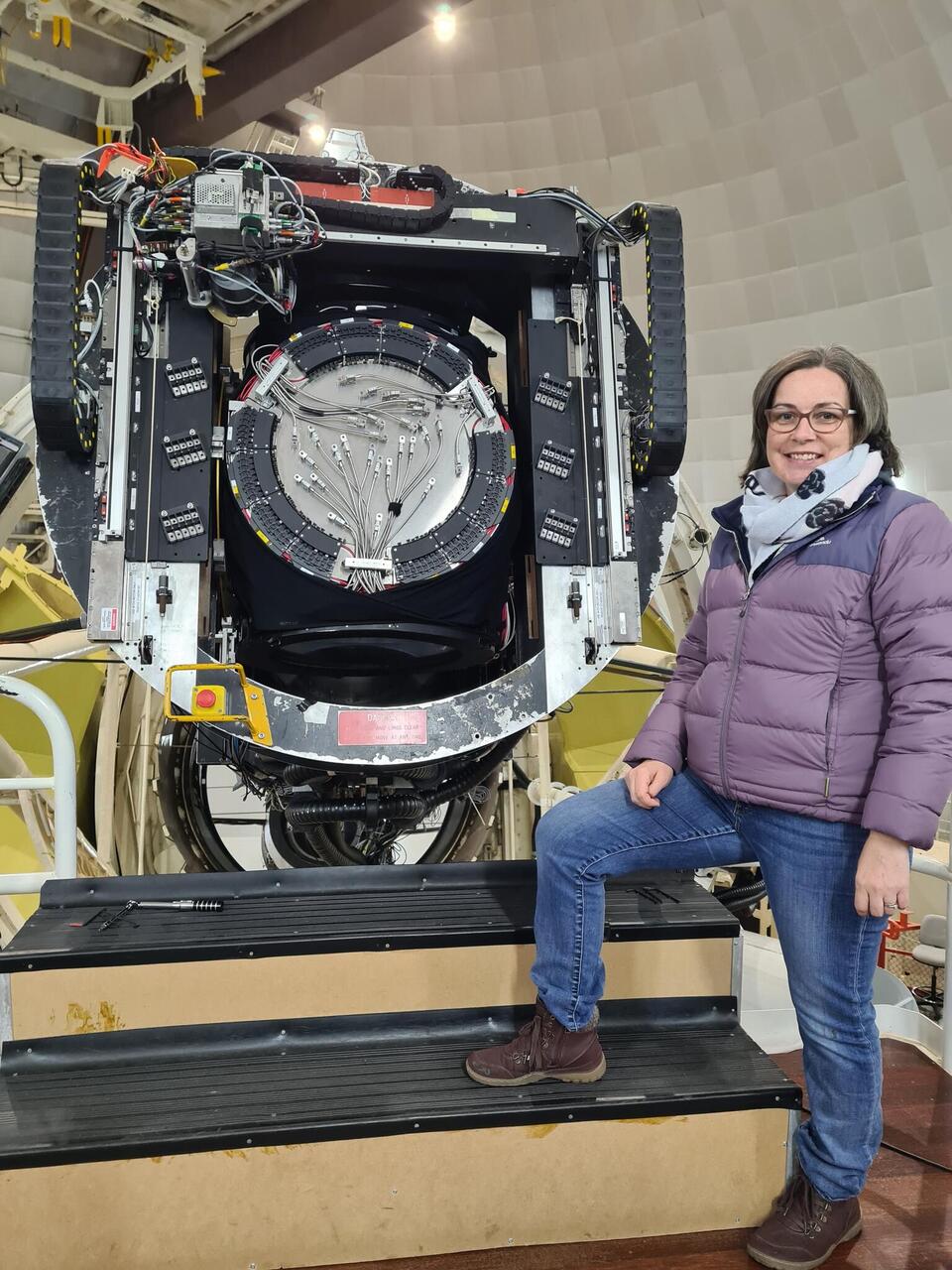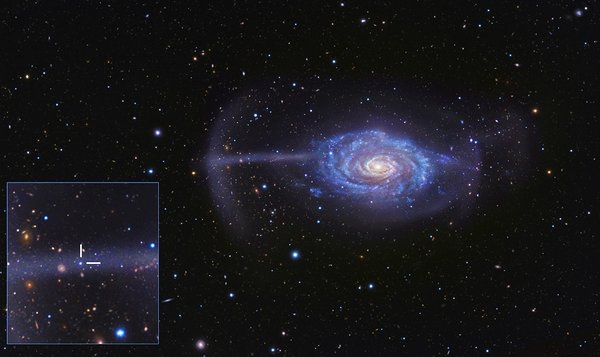My research interests have broadly focused on the formation and chemical enrichment of various structures in the universe. To this end, I have used a variety of techniques across a range of astronomical scales to better understand how the universe formed and how galaxies assembled. My research has led to the development of innovative techniques to exploit 3D spectroscopy data from the largest scales, cosmological voids, down to much smaller structures, globular clusters.
Gallery of selected MAGPI galaxies at redshift z~0.3 (~3.5 billion years ago) spanning a range of morphological types. Credit: Foster et al. (in preparation).
While complex, the process of galaxy formation throughout cosmic time has led to recognisably distinct types of galaxy structures. I am currently using the MAGPI, Hector and SAMI survey data to understand the impact of various physical processes on the structural and dynamical evolution of galaxies.
NGC 4651: The Umbrella Galaxy. Image Credit & Copyright: R Jay Gabany (Blackbird Observatories) as it originally appeared in NASA APOD. Collaboration: C.Foster (Australian Astronomical Obs.), H.Lux (U. Nottingham, Oxford), A.Romanowsky (San Jose State, UCO), D.Martínez-Delgado (Heidelberg), et al.
My work on the assembly of the Umbrella Galaxy (see image above, Foster et al. 2014, MNRAS, 442, 3544) was the first to spectroscopically target bright tracers such as planetary nebulae, HII regions and globular clusters within the impossibly faint halo substructures in order to measure their kinematics. My research revealed the 3D structure of the shredded stars around NGC 4651. Combined with theoretical modeling, we were also able to identify the remnant nucleus of the infalling galaxy.
My PhD research concentrated on globular clusters and the unresolved starlight around nearby early-type galaxies. I developed an innovative technique to measure the chemical content of unresolved globular clusters around nearby (within 60 Mpc) galaxies using the near-infrared calcium triplet (Foster et al. 2010, AJ, 139, 1566).
Globular clusters come in two flavours: blue and red, for reasons that are subject to debate. We used data from the 10m Keck telescope on Mauna Kea in Hawaii to: (1) confirm that this `colour bimodality’ in globular clusters is related to a `metallicity bimodality’ (e.g. Foster et al. 2011, MNRAS, 415, 3393; Foster et al. 2010; Usher et al. 2015, MNRAS, 446, 369) and; (2) show that the blue and red globular clusters have distinct dynamics (e.g. Pota et al. 2013, MNRAS, 428, 389; Foster et al. 2011). These discoveries have led to new insights into and avenues for studying the total mass in galaxies (Cortesi et al. 2016, MNRAS, 457, 1242; Pota et al. 2015, MNRAS, 450, 3345), which is critical to our understanding of the distribution and amount of dark matter around galaxies.
As a Masters student, I authored and developed an algorithm that identifies and quantifies the properties of cosmological voids in the universe (Foster & Nelson 2009, ApJ, 699, 1252). These regions devoid of visible matter are the largest structures observed in the universe. My void-finding algorithm has provided new constraints for cosmological models using data from the Sloan Digital Sky Survey (SDSS, Foster & Nelson 2009, Colberg et al. 2008, MNRAS, 387, 933) and is publicly available on this website.


